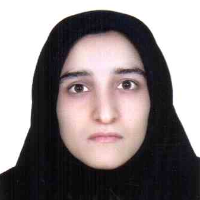Geology, petrography, mineral chemistry and fluids inclusion of the Kalate Shab iron skarn (East of Sarbisheh, Southern Khorasan)
Extensive Eocene–Oligocene magmatic rocks in the Lut–Sistan region, eastern Iran crop out as a huge magmatic province (Pang et al., 2013). Skarnification in Paleocene- Eocene limestones in the Sistan suture zone is very popular (e.g. Nakhaei et al., 2013; Nakhaei et al., 2015; Zarrinkoub et al., 2011) and the Kalate Shab skarn is one of them. Geological and geochemical studies and the results of magnetic measurements in the area of interest and its applicability in exploration of other potential iron deposits in the neighboring areas (Saadat, 2016) are of interest. Metamorphic (the Siah Kamar Skarn) edge of the Mount Rigi granitoid intrusion is calcium type (Biabangard et al., 2015). This skarn is located 105 kilometers east of Sarbisheh, north of the Kalate Shab village. This area is a part of 1: 100,000 geological map of Mahirud (Guillou et al., 1981), with 60° 31' to 60° 35' longitudes, and 32° 21' to 32° 26' latitudes, in the southern Khorasan province (Figure 1), and in the northern part of the Sistan suture zone (Tirrul et al., 1983) in the east of Iran. The Sistan suture zone represents a deformed accretionary prism that was emplaced during the destruction of a small Neotethyan ocean basin, referred to as the Sistan Ocean, which once separated the Lut and Afghan continental blocks from each other (Tirrul et al., 1983). Late Cretaceous adakitic granodiorites and Early Eocene A-type granites have been emplaced in the suture (Zarrinkoub et al., 2012). This was followed by widespread Eocene–Oligocene calc-alkaline volcanic activity in the suture zone and to the west in the Lut block (Pang et al., 2013). Oligomiocene intrusive and sub volcanic bodies (Guillou et al., 1981) have intruded into the sedimentary units and caused skarnification in the north of the Kalate Shab.
This study was done based on 140 thin sections, 1 polished section and 5 polished thin sections with 3 XRD analysis at the University of Birjand laboratory. 3 samples for fluid inclusions have been studied in the laboratory of the Payame Noor University of Mashhad. Microprobe analysis on 4 samples have been done at the Laboratory of Iran Mineral Processing Research Center.
Intrusive and sub volcanic bodies with composition of diorite and quartz diorite have intruded into limestone and have produced Fe skarn in the Kalate Shab area. Mineralogical evidence suggests two stages of progressive and retrograde metamorphism in the region. Microprobe analysis of minerals in the skarn zone shows that garnets are andradite and pyroxene is of diopside- hedenbergite type. Average salinity and temperature of fluid based on micro thermometric data in the Kalate Shab are 13.2 wt% and 222oC, respectively. Magmatic and meteoric waters mixing and chemical changes in carbonate host rock are the main factors for genesis of Fe deposit.
An intermediate magma has intruded into the Paleocene- Eocene limestone, and has caused Fe- skarnification in the Kalate Shab region. The intrusive and sub volcanic rocks are diorite, quartz diorite, porphyritic quartz diorite and porphyritic diorite. Skarnification has occurred as exo skarn with pyroxene, garnet, idocrase, epidote and magnetite minerals. Pyroxenes are diopside- hedenbergite type and garnets are andradite based on EPMA and XRD analyses. Micro thermometric data in the Kalate Shab skarn show temperatures ranging from 171 to 286 ° C and salinity from 11.81 to 14.77%. Petrological studies show that the magnetite formation has occurred in the final stage of skarnification.
- حق عضویت دریافتی صرف حمایت از نشریات عضو و نگهداری، تکمیل و توسعه مگیران میشود.
- پرداخت حق اشتراک و دانلود مقالات اجازه بازنشر آن در سایر رسانههای چاپی و دیجیتال را به کاربر نمیدهد.




